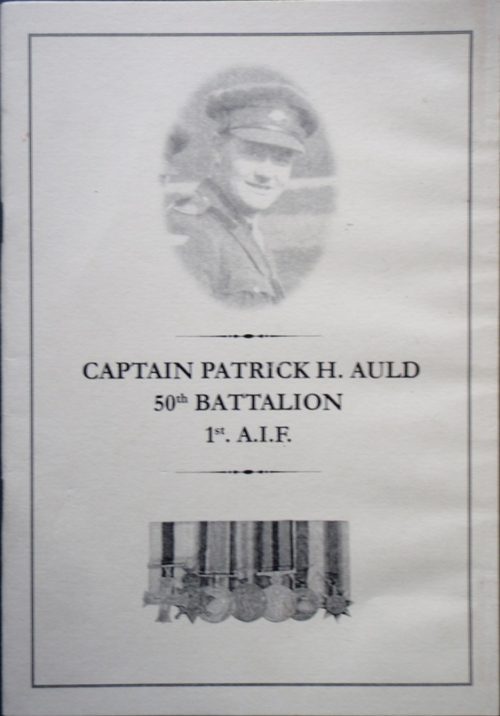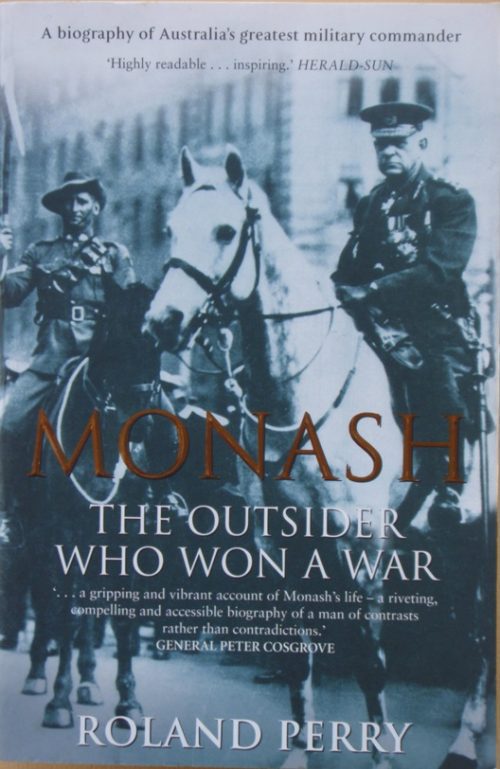Description
Title: Captain Patrick Auld – 50th Battalion 1st AIF
Author: Parker, Gilbert
Condition: Near Mint
Edition: 1st Edition
Publication Date: 2004
ISBN: 095937860X
Cover: Soft Cover without Dust Jacket – 33 pages
Comments: The fascinating autobiography of Captain Patrick Howard Auld MC who served initially with Field Ambulance and later with the 50th Battalion during World War I.
He was awarded the Military Cross for bravery on 19th April, 1917.
“For conspicuous gallantry in action. Although wounded he led his men forward to reinforce part of the front line displaying great courage and initiative. He set a splendid example to his men.”
He enlisted in November 1914 and returned to Australia in March, 1919.
The 50th Battalion was raised in Egypt on 26 February 1916 as part of the “doubling” of the AIF. Approximately half of its recruits were veterans from the 10th Battalion, and the other half, fresh reinforcements from Australia. Reflecting the composition of the 10th, the 50th was predominantly composed of men from South Australia. The battalion became part of the 13th Brigade of the 4th Australian Division and was dubbed “Hurcombe’s Hungry Half Hundred”, after its first CO, Lieutenant Colonel Frederick Hurcombe.
After arriving in France on 11 June 1916, the 50th fought in its first major battle at Mouquet Farm between 13 and 15 August and suffered heavily. It took part in another assault launched there on 3 September. The battalion saw out the rest of the year alternating between front-line duty, and training and labouring behind the line. This routine continued through the bleak winter of 1916-17.
Early in 1917, the battalion participated in the advance that followed the German retreat to the Hindenburg Line, and attacked at Noreuil on 2 April. For his actions at Noreuil Private Joergen Jensen was awarded the Victoria Cross. Later that year, the focus of AIF operations moved to the Ypres sector in Belgium. There the battalion was involved in the battle of Messines between 7 and 12 June and the battle of Polygon Wood on 26 September. Another winter of trench routine followed.
Utilising troops freed by the collapse of Russia in October 1917, the German Army launched a major offensive on the Western Front at the end of March 1918. The 4th Division was deployed to defend positions south of the River Ancre in France. At Dernancourt, on 5 April, the 50th Battalion assisted in the repulse of the largest German attack mounted against Australian troops during the war. The German threat persisted through April, and on ANZAC Day 1918 the 50th participated in the now- legendary attack to dislodge the enemy from Villers-Bretonneux.
The 50th Battalion continued to play an active role during the Allies’ own offensive, launched on 8 August 1918. Its last major operation of the war was the attack on the Hindenburg “outpost line” on 18 September, during which the 50th composed part of the 4th Division’s reserve. The 50th Battalion ceased to exist as a separate entity when it amalgamated with the 51st Battalion on 6 March 1919.




